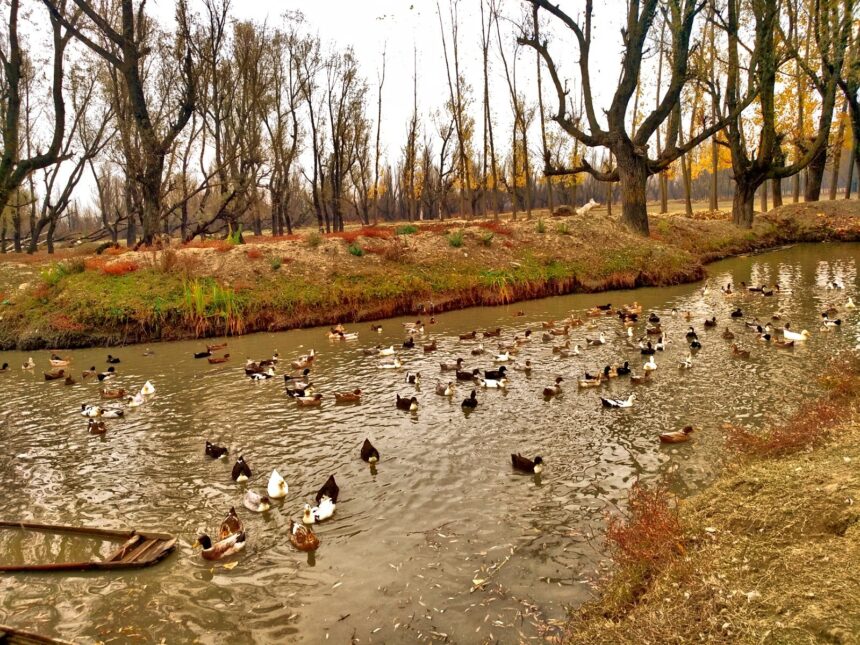Hygam Wetland
The Hygam Wetland in north Kashmir is currently a haven for migratory birds, hosting approximately 3 lakh avian visitors from over 25 species, according to officials. Anti-poaching squads are maintaining high alert to protect the birds.
A Seasonal Home for Migratory Birds
The wetland serves as a seasonal home to thousands of migratory birds, including species like the White Heeled Duck, Shoveller, Red-Crested Pochard, White-Eyed Pochard, Pintail, Mallard, Gadwall, Coot and Graylag. It spans 7.25 kilometers and includes around 1,400 hectares of land and is a designated Ramsar site.
An officer concerned with the Hygam Wetland stated that the movement of the birds helps keep some pathways open when the water freezes during peak winter. The department intervenes when necessary to ensure the birds’ survival, especially regarding food availability. The exact count of migratory birds will be determined at the end of the season through detailed field and comprehensive surveys.
Anti-Poaching Measures and Regulations
Historically, poaching was rampant in the region and posed a severe threat to migratory birds. However, officials have taken strong measures to curb illegal hunting. Hunting was allowed under a licensing system during the tenure of Maharaja Hari Singh, but it was completely banned after the Supreme Court ruling and the enactment of the Wildlife Protection Act in 1972, according to Mohammad Iqbal Wani, an official.
The Wildlife Protection Act was amended in 2022 to further tighten regulations and introduce stricter penalties for poaching. Now, even an attempt to hunt birds is treated as a serious offense, with fines up to Rs 1 lakh and imprisonment of 3 to 7 years for violators, Wani said.
The Wildlife Department has established anti-poaching squads comprising members from the Forest Protection Force and Wildlife Department to enforce the law effectively. These teams conduct regular surveillance operations, particularly during peak poaching hours in the early morning and evening.
Decline in Poaching
Wani claimed that poaching has been reduced by 98% and a 100% target is in sight. He said the ongoing efforts have yielded significant results and that they are now working towards achieving a 100% poaching-free wetland.
The official said that they have been conducting awareness drives to educate locals about the legal implications of hunting migratory birds. They are urging people to respect the law to avoid legal consequences and protect these birds, which are a vital part of the ecosystem.
Kashmir’s Wetlands: A Haven for Migratory Birds
These migratory birds create a riot of color as they keep their annual tryst with Kashmir’s wetlands. Last year, official data stated that the Valley hosted 8 to 12 lakh migratory birds, while in 2021-2022, the number was 11 to 12 lakh.







